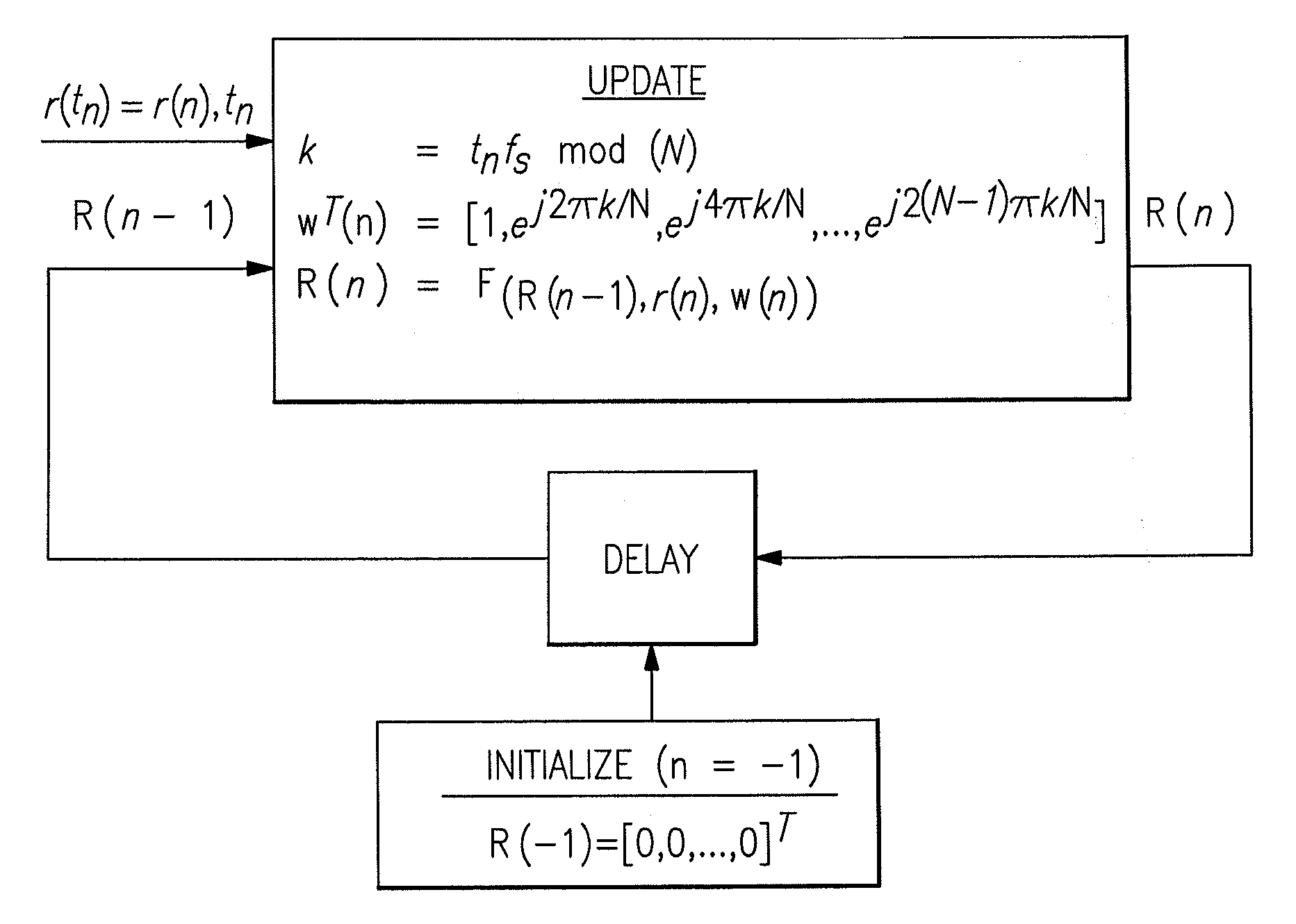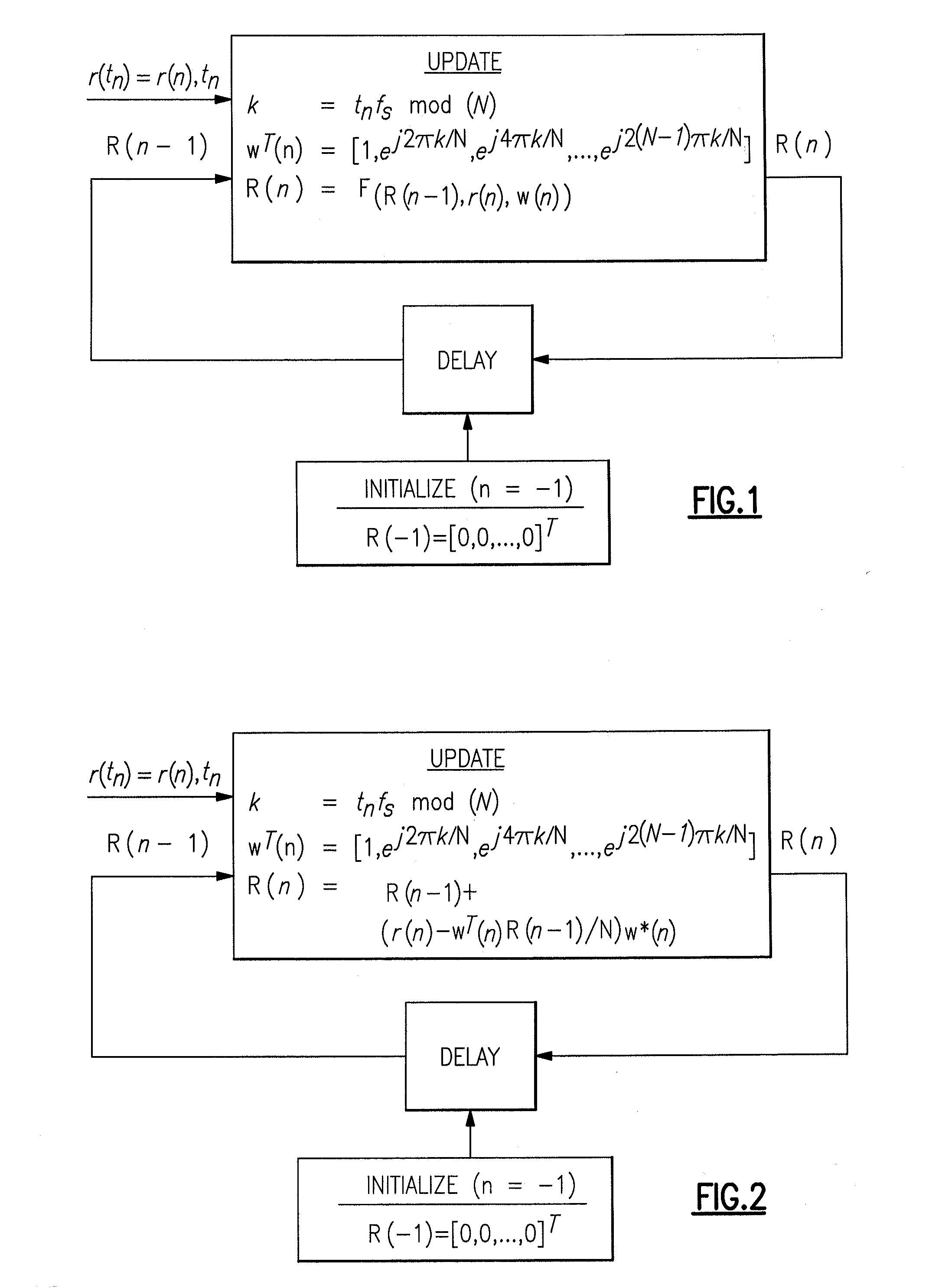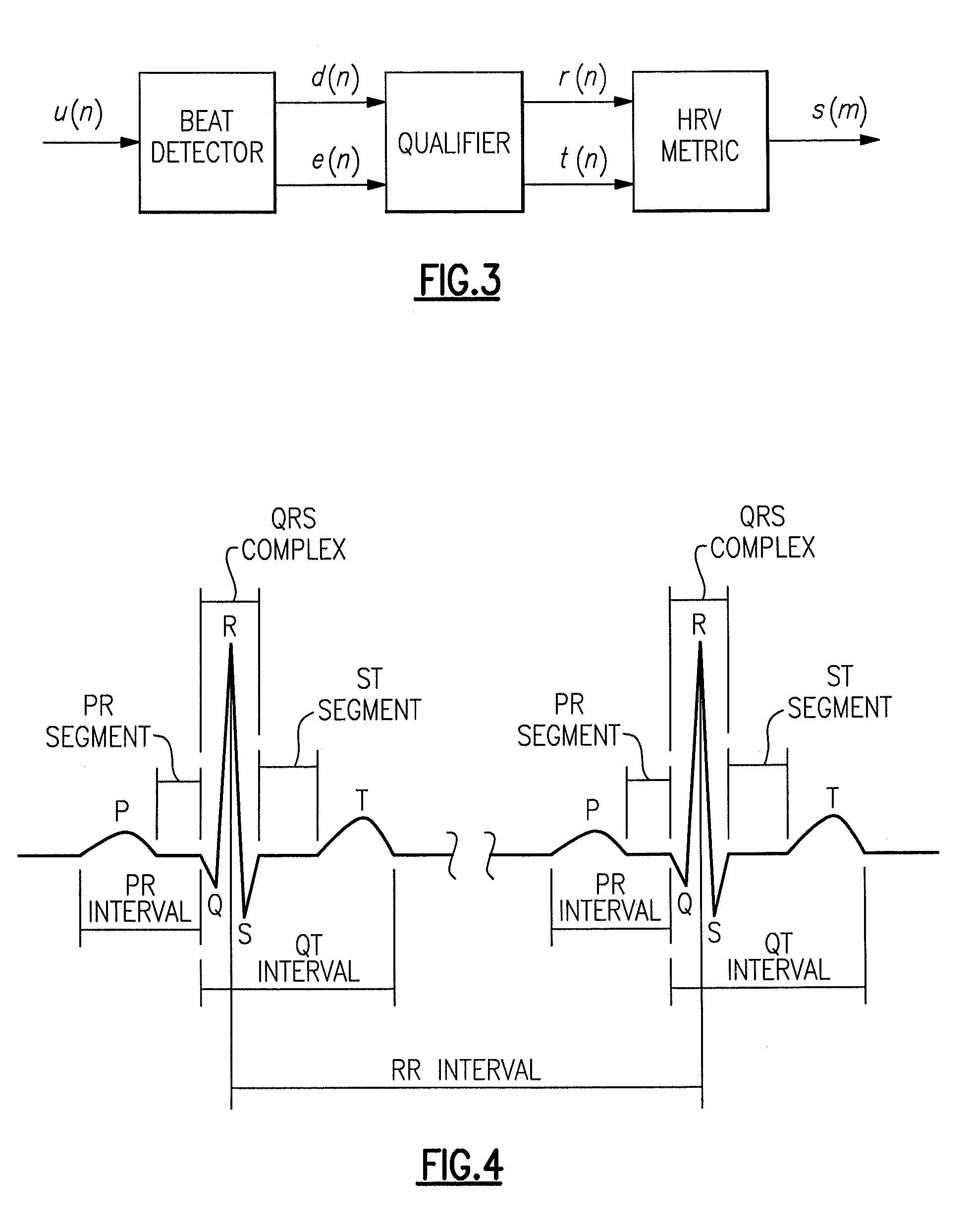Method and apparatus for spectrum estimation
a spectrum estimation and spectrum technology, applied in the field of spectrum estimation, can solve the problems of data missing in the common place, and data missing in the routine of dft and
- Summary
- Abstract
- Description
- Claims
- Application Information
AI Technical Summary
Benefits of technology
Problems solved by technology
Method used
Image
Examples
example 1
[0054]Randomly Varying Sample Time Interval: The first example provides an illustration of spectrum estimation performance in a situation where the time interval between samples varies randomly as multiple of the basic time quantization, 1 / fs. I use the following sinusoidal signal:
r(t)=∑i=-(M-1) / 2(M-1) / 2aij2πfit+v(t)(I-3)
with M+1 frequencies, fi, and corresponding amplitudes, ai, which may be complex numbers. ν(t): N(0,σ2) is a normally distributed, zero mean additive random noise.
[0055]For the simulation of example 1, I chose a1=a−1=a2=a−2, a3=a−3=a4=a−4=1, and f1=10, f−1=−10 f2=20, f−2=−20, f3=100, f−3=100, f4=200, f−4=200 Hz, and standard deviation of ν(t) is σ=0.01. All other parameters are equal to zero. Let fs=512 and sample the signal at discrete times.
tn=3n+⌊z+0.5⌋fs(I-4)
[0056]where z is a random number uniformly distributed between −1.5 and 1.5. The offset of 0.5 causes the “floor function”,
└z┘=max{nεZ|n≦z} (I-5)
to round (versus truncate). The sample time interval varies r...
example 2
[0057]Narrow Signal Bandwidth Within a Wide Analysis Bandwidth: This second example illustrates how to exploit a priori knowledge of R(n) in order to avoid significant amounts of computation. For example, if it is known that a certain portion of the coefficients R(n) are zero, they can be removed from the vector R(n) in EQ. I-2 (and hence are not stored or updated), and the corresponding components are removed from the complex exponential vectors.
[0058]A simple model for the “instantaneous heart rate” is:
h(t)=hm+a1 cos(2πf1t)+ah cos(2πf2t)+ν(t) (I-6)
which is the heart rate equal to the reciprocal of the time interval between successive heart beats, a time interval that varies from beat to beat. Excluding the DC mean, two frequency peaks can roughly model the spectral characteristics of the heart rate, as discussed in more detail below. For this example, I chose a sampling rate of fs; =500, and hm=60 to be the mean number of beats per minute (bpm). Let a1=2 bpm, ah=2.5 bpm, fi=0.095...
example 3
[0075]FIG. 7 shows graphs of power spectrum estimates comparing the LST of EQ. II-1 with the RFT of EQ. I-2 at 512 equally spaced frequencies for a synthetic signal having 4 cosine frequencies and 1% noise. The sample time interval varied randomly from 1 to 5 times the basic time quantization of 1 / 512 seconds. FIG. 7 compares spectrum estimates using the first exemplary signal of EQ. I-3 with four sinusoidal frequencies and a sample time interval that varies randomly from 1 to 5 times the basic time quantization of 1 / 512 seconds.
[0076]In example 3, both estimators show all four frequency peaks. However, the RFT is more consistent for this stationary signal example in the sense that signal to noise ratio improves as more data samples are used in computing the estimate.
PUM
 Login to View More
Login to View More Abstract
Description
Claims
Application Information
 Login to View More
Login to View More - R&D
- Intellectual Property
- Life Sciences
- Materials
- Tech Scout
- Unparalleled Data Quality
- Higher Quality Content
- 60% Fewer Hallucinations
Browse by: Latest US Patents, China's latest patents, Technical Efficacy Thesaurus, Application Domain, Technology Topic, Popular Technical Reports.
© 2025 PatSnap. All rights reserved.Legal|Privacy policy|Modern Slavery Act Transparency Statement|Sitemap|About US| Contact US: help@patsnap.com



